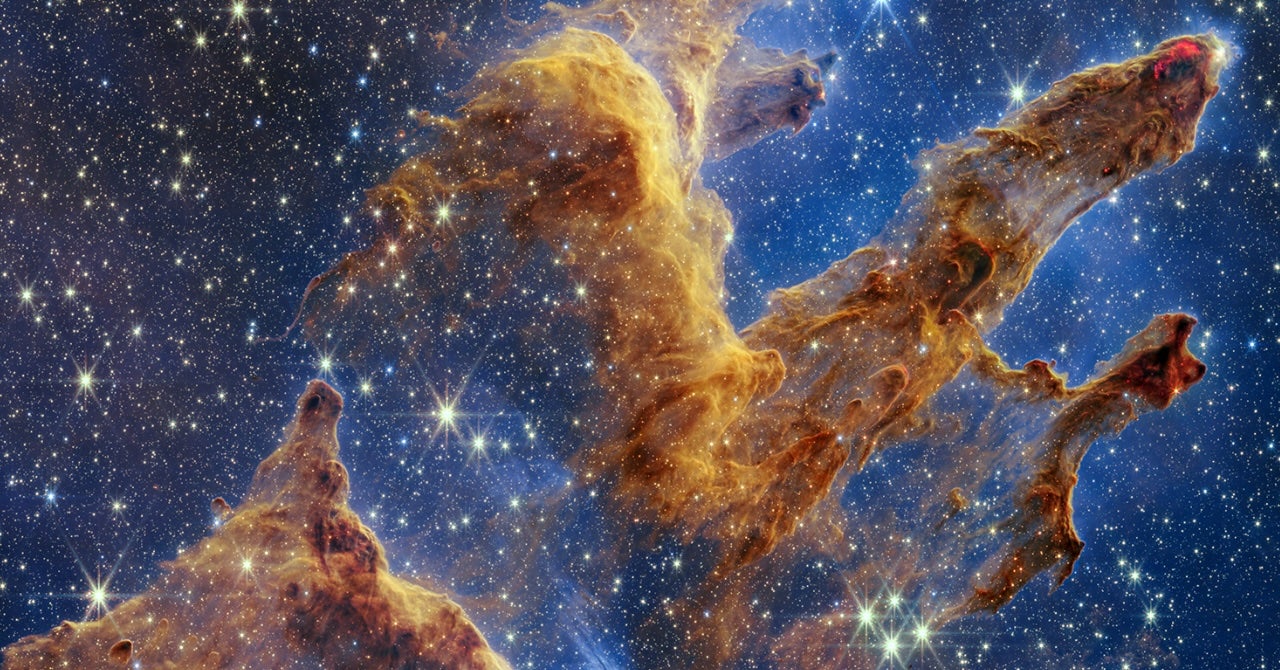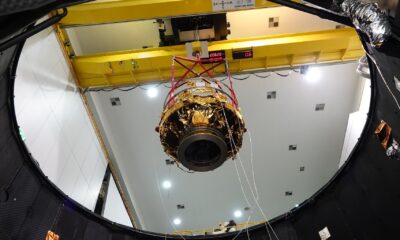Science
Scientists Uncover Origins of Buckyballs in Space Chemistry

In a groundbreaking study, researchers have identified key processes that may explain the formation of buckyballs, or fullerenes, in space. An international team, led by scientists from CU Boulder, conducted experiments that mimic the chemistry occurring in the interstellar medium, unveiling insights into the origins of these intriguing carbon structures.
The study, published in the Journal of the American Chemical Society, indicates that conditions in space could facilitate the transformation of polycyclic aromatic hydrocarbons (PAHs) into fullerenes. These findings could enhance our understanding of the building blocks that contributed to the formation of Earth’s solar system over billions of years.
Exploring the Building Blocks of the Universe
“We’re all made of carbon, so it’s really important to know how carbon in the universe gets transformed on its way to being incorporated into a planetary system like our own,” stated Jordy Bouwman, lead author and assistant professor at the Department of Chemistry at CU Boulder. The research highlights the significance of fullerenes, particularly buckminsterfullerene—commonly known as buckyballs, which consist of 60 carbon atoms arranged in a spherical structure resembling a soccer ball.
Despite their prevalence in the interstellar medium, scientists have struggled to pinpoint the origins of buckyballs. This new research suggests that radiation in space plays a pivotal role in converting PAHs into these complex molecules. “This gives us a hint that the buckyballs found in space may be connected to these large aromatic molecules that are also abundant,” Bouwman added.
Simulating Space Chemistry on Earth
To simulate the conditions of space, researchers focused on two small PAH molecules: anthracene and phenanthrene. These compounds, known for their honeycomb-like structure, are common in smoke and soot on Earth. The team bombarded these PAHs with a beam of electrons, mimicking the interaction of radiation with molecules in the interstellar medium. This process resulted in the formation of new, charged organic molecules.
The researchers then utilized an ion trap apparatus at the Free Electron Lasers for Infrared eXperiments (FELIX) facility in Nijmegen, Netherlands, to analyze the structures of the transformed molecules. They discovered an unexpected outcome: the removal of one or two hydrogen atoms from anthracene and phenanthrene led to a radical rearrangement of their structures, incorporating both hexagons and pentagons.
“That was a very surprising result—that just by kicking off a hydrogen atom or two, the entire molecule completely rearranged,” said Sandra Brünken, a co-author of the study and associate professor at Radboud University. This finding suggests that these pentagon-bearing molecules might serve as a crucial link in the conversion of common PAHs into buckyballs and other fullerenes.
The implications of this research extend beyond the laboratory. Bouwman and Brünken express hope that astrophysicists will leverage their findings to search for similar pentagon-bearing molecules in space, particularly using the James Webb Space Telescope, which offers advanced capabilities for exploring the cosmos. “You can take our results from the laboratory and then use them as a fingerprint to look for the same signatures in space,” Brünken explained.
Co-authors of the study from CU Boulder include LASP graduate students Madison Patch and Rory McClish, along with collaborators from Leiden University, Paris-East Créteil University, and the University of Maryland College Park.
This research not only enhances our understanding of carbon chemistry in the universe but also opens new avenues for exploring the fundamental processes that shape planetary systems, including our own.
-

 Technology4 months ago
Technology4 months agoDiscover the Top 10 Calorie Counting Apps of 2025
-

 Health2 months ago
Health2 months agoBella Hadid Shares Health Update After Treatment for Lyme Disease
-

 Health3 months ago
Health3 months agoErin Bates Shares Recovery Update Following Sepsis Complications
-

 Technology3 weeks ago
Technology3 weeks agoDiscover 2025’s Top GPUs for Exceptional 4K Gaming Performance
-

 Technology2 months ago
Technology2 months agoElectric Moto Influencer Surronster Arrested in Tijuana
-

 Technology4 months ago
Technology4 months agoDiscover How to Reverse Image Search Using ChatGPT Effortlessly
-

 Technology4 months ago
Technology4 months agoMeta Initiates $60B AI Data Center Expansion, Starting in Ohio
-

 Technology4 months ago
Technology4 months agoRecovering a Suspended TikTok Account: A Step-by-Step Guide
-

 Health4 months ago
Health4 months agoTested: Rab Firewall Mountain Jacket Survives Harsh Conditions
-

 Lifestyle4 months ago
Lifestyle4 months agoBelton Family Reunites After Daughter Survives Hill Country Floods
-

 Technology3 months ago
Technology3 months agoUncovering the Top Five Most Challenging Motorcycles to Ride
-

 Technology4 weeks ago
Technology4 weeks agoDiscover the Best Wireless Earbuds for Every Lifestyle




















